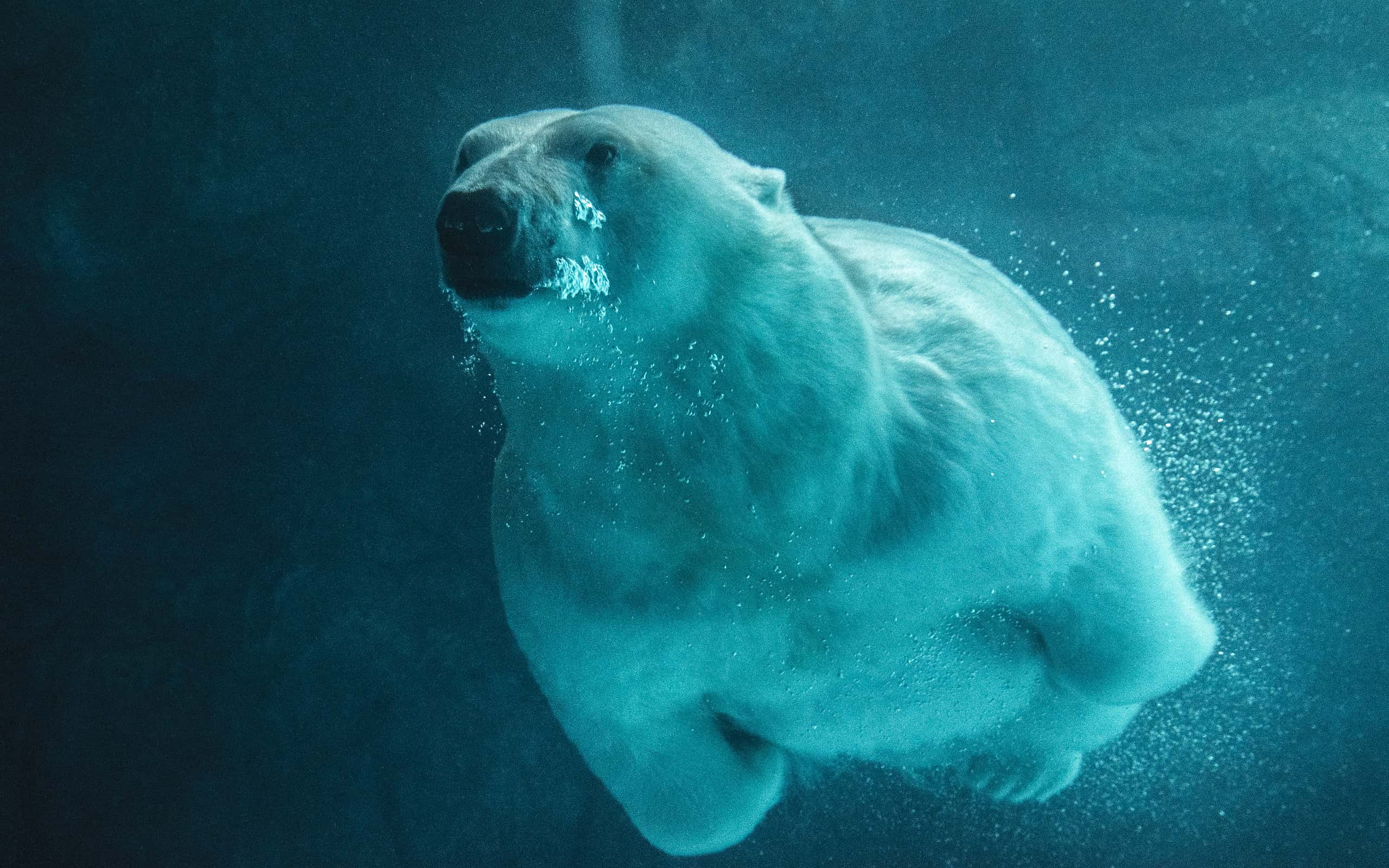Polar bears rule the Arctic with their formidable size, sharp claws, and ferocious bite. They bound across the snow in search of prey, and if that doesn’t work, they’re willing to dive into the ocean!
But are they good swimmers? Yes! In fact, polar bears can swim better than most mammals, including humans. They’re at home in frigid waters and have incredible stamina.
Intrigued? Here are nine facts that demonstrate how well polar bears can swim.
1. Polar Bears Are Marine Animals
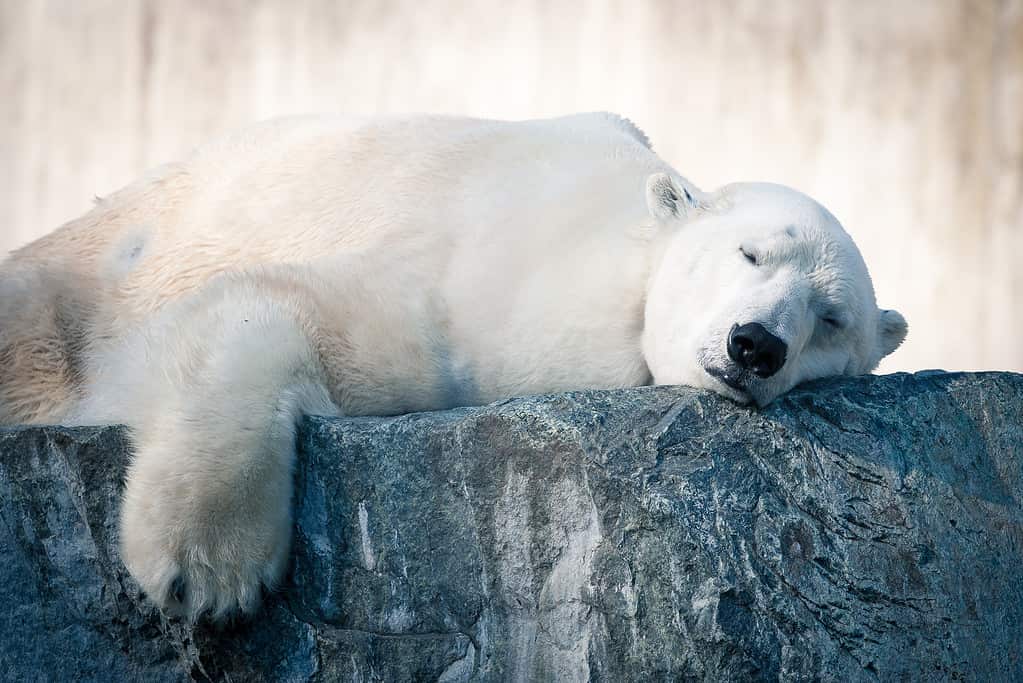
The Marine Mammal Protection Act (MMPA) includes polar bears.
©Robert Kdot/Shutterstock.com
Polar bears are the only bears in the world considered marine animals. They hold this distinction because their survival depends on sea ice. Other bear species, like brown bears, can thrive in many environments, but polar bears need constant access to icy water.
You might see a polar bear at a desert or tropical zoo because they can withstand warm weather if the freezing pool requirement is satisfied. The zoos usually build climate-controlled enclosures as well.
2. Polar Bears’ Fat Keeps Them Warm
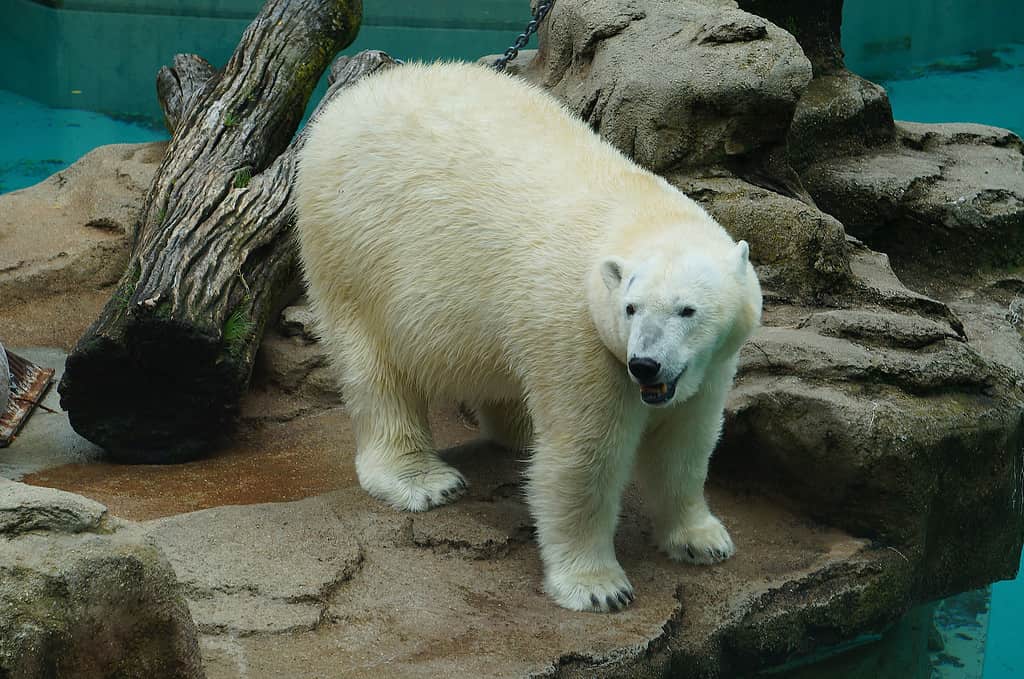
Think polar bears look chubby? They need their bulk to stay warm.
©David JV/Shutterstock.com
Scientists measuring Arctic Ocean temperatures often register numbers below freezing. Polar bears can immerse themselves in this sub-zero water because of their massive size. Their fat layer can be as thick as 4.49 inches.
The extra blubber keeps them warm in cold water. On land, polar bears also have two layers of fur to help insulate. The coat loses some of its insulation power once wet.
3. Polar Bears Can See Underwater

Polar bears have a special eyelid that acts like goggles underwater.
©Vladone/iStock via Getty Images
Polar bears can see underwater. Their eyes are protected by a third eyelid called a nictitating membrane. It’s a valuable hunting skill — researchers estimate that polar bears’ underwater gaze extends for 15 feet.
4. Polar Bears Are Fast Swimmers
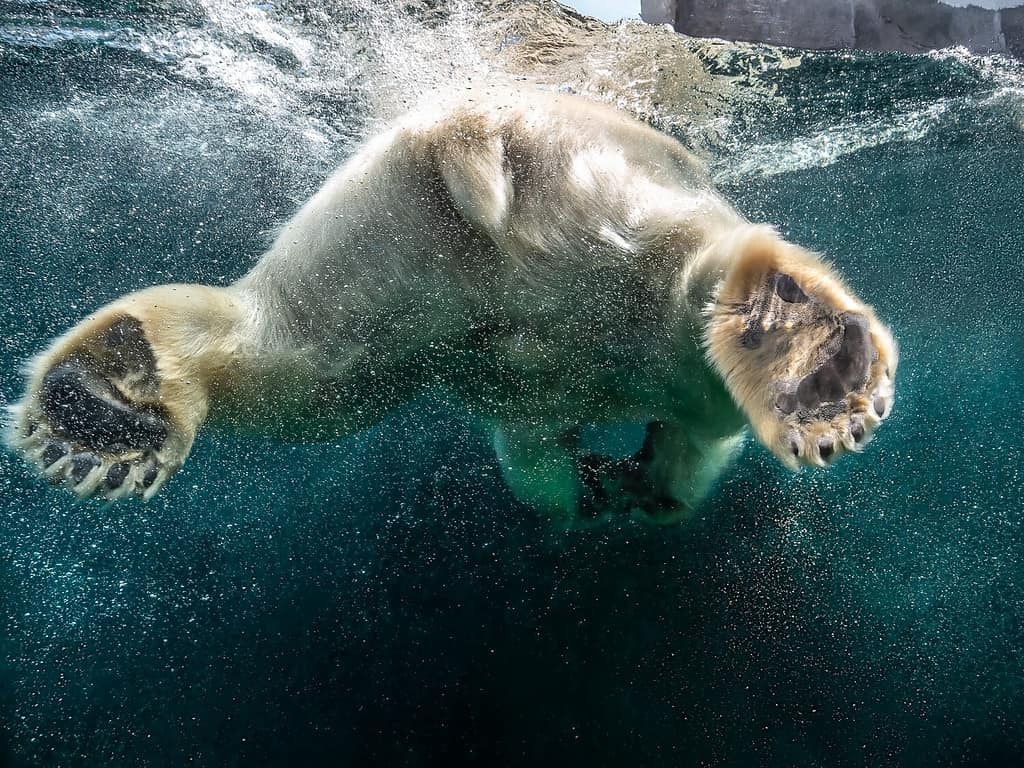
Like many marine predators, polar bears are quite fast underwater.
©Angelica Corneliussen/Shutterstock.com
Unfortunately for seals, polar bears are still lethal underwater. They can swim 6.2 mph (10 kph), fast enough to catch fleeing prey. Their bodies are quick and agile due to copious help from nature.
Polar bears have muscular hind legs that steer them through the water and front paws that create thrust with every stroke.
5. Polar Bears Can Swim For Days at a Time

A polar bear may have to swim for hundreds of miles.
©Vladimir Gjorgiev/Shutterstock.com
Polar bears can swim continuously for days. Researchers once recorded an adult female swimming for nine days straight. It was a harrowing journey, however. She lost her cub, which was too weak for the extended trip, and weighed 22% less than when she started by the time she reached her destination.
A more typical long swim for a polar bear lasts for a few hours.
6. Climate Change is Forcing Polar Bears to Swim Further

Melting Arctic ice affects polar bears.
©Alexey_Seafarer/iStock via Getty Images
When arctic sea ice is abundant, some remains even in the summer. In these conditions, polar bears don’t have to swim too far before finding another patch of ice.
Climate change is shifting scene. The female polar bear who swam for nine days was likely affected by dwindling ice due to rising temperatures. Less ice means fewer resting places for swimming polar bears.
Today, polar bears are on the endangered species list due to habitat.
7. Polar Bears Can Hold Their Breath for Minutes

If you watch a polar bear swim, it might disappear underwater for a few minutes.
©Tinnaporn Sathapornnanont/Shutterstock.com
Polar bears can swim well in part because they can hold their breath underwater for minutes. It becomes useful when they’re diving for prey that won’t come up to the surface.
Compared to humans, polar bears’ 6.2mph underwater speed is unbeatable. That’s not the case with polar bear prey animals, however. Many are significantly faster, and the polar bear can’t depend on a water race for success.
One way they boost their odds in the hunt is a focused dive in the water that enables them to capture prey by surprise. The longest polar bear dive recorded lasted a whopping 3 minutes and 10 seconds!
8. Polar Bears Have Webbed Paws
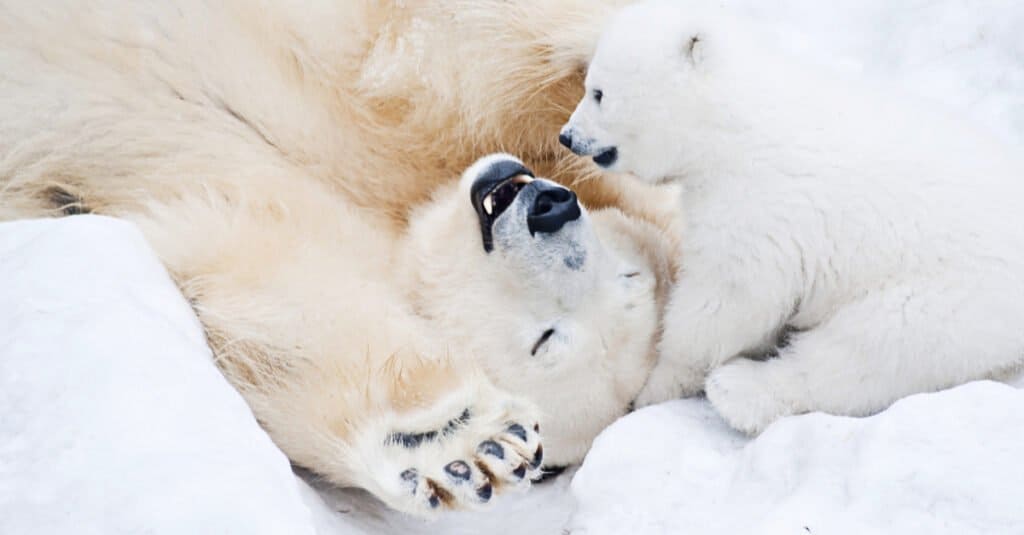
Can you see the webbing?
©Lamberrto/Shutterstock.com
Another secret weapon that helps polar bears swim is their lightly webbed paws. The webbing turns their paws into thick paddles that propel them through the water.
Their hind paws are equipped with long, curving claws instead of webbing. The claws let the polar bear grip both slippery ice and animals like seals.
9. Polar Bears Have Small Ears

Polar bear ears barely stick out.
©Tinnaporn Sathapornnanont/Shutterstock.com
Perhaps the least noticeable adaption that helps polar bears swim is their ears. They’re smaller than most bears’ ears and flatten underwater. These may not seem like protections, but they help keep the bear’s ears free from water that could later freeze. The small size of their ears also aids polar bears in minimizing heat loss.
Thank you for reading! Have some feedback for us? Contact the AZ Animals editorial team.

